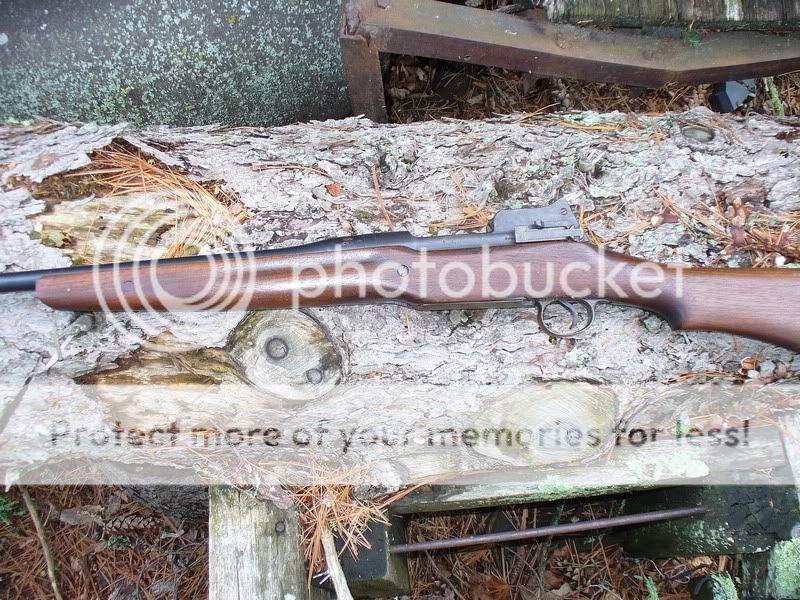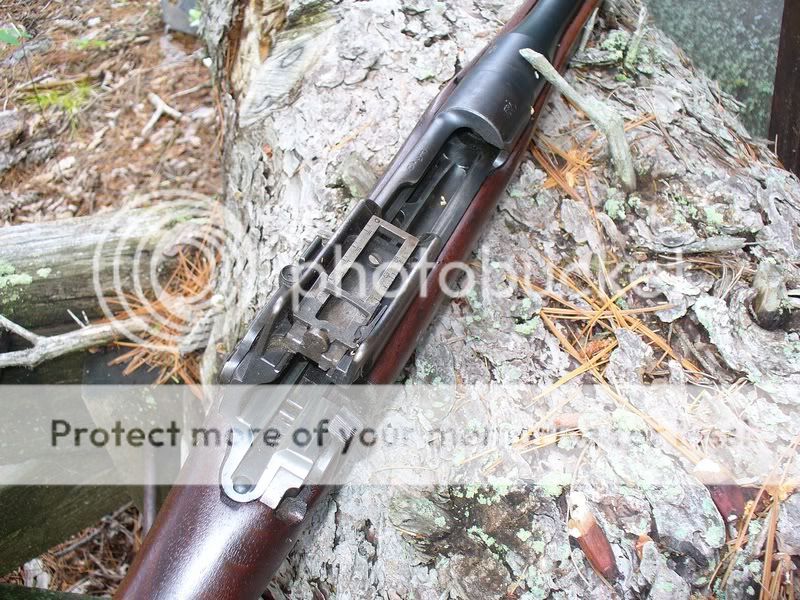fat tony
CGN Ultra frequent flyer
http://milpas.cc/rifles/ZFiles/Bolt...IFLE/THE PATTERN 1914 (No3) RIFLE History.htm
All you ever needed to know about the P-14!
The P14, as it is most commonly known as, was originally designed by RSAF (Royal Small Arms Factory) Enfield. Though technically it is not an Enfield rifle, it has become known as such.
The P14 was born out of criticism of the much-loved SMLE. One criticism was based upon the SMLE's action, which was not perceived to be as strong as the Mauser action. The Lee action relying on rear locking lugs as opposed to the Mauser forward locking lugs. Another of the criticisms was the antiquated rimmed cartridge. Therefore, in 1910 the British War Office began to consider a replacement for the SMLE. Various field trials revealed the desirability of a rifle that consisted of the following features: a one piece stock, receiver mounted rear aperture sight, forward locking lugs and a smaller caliber/higher velocity rimless cartridge.
In 1913 RSAF Enfield produced 1000 rifles in .276 caliber (7mm), the Pattern 13 Rifle. A significant problem quickly surfaced with the P13, the intense pressure of the .276 round (which was based upon the infamous .280 Ross cartridge). These pressures caused chamber and barrel wear, breech explosions, and "cook-offs", where the heat of the chamber caused chambered cartridges to go off before the trigger was pulled. With tensions building in Europe during this time, the issue of the .276 cartridge was never pursued.
At the outbreak of WW1, the War Office decided to continue production of the SMLE, yet also to produce the new rifle but in standard .303 British caliber and so, the Pattern 1914 rifle was born. Initially a contract was let to Vickers Ltd. for the production of the P14 but they had trouble getting into production and all the other rifle factories were busy producing SMLE's. This led the War Office to approach the American arms factories Winchester and Remington requesting that they produce the P14 and as such, production began in 1916.
Unfortunately, it seems the P14 was doomed from the start. Earlier trials with the new cartridge proved unsatisfactory and now in the rush to produce these rifles, Winchester, Remington and Eddystone Remington were allowed to produce the rifles independantly of each other. This resulted in parts incompatability between the three separately produce rifles. This in turn, resulted in the British War Office approval of three separate designations: the Pattern 14 MkI E (manufactured by Eddystone), the Pattern 14 MkI R (manufactured by Remington) and the Pattern 14 MkI W (manufactured by Winchester). This incompatability between the rifles, was one of the reasons why at the end of hostilities in Europe in 1918. The P14 was ordered into storage, not to be seen again until the outbreak of WW2 in 1939. During WW2 the P14 was utilized as third line defence weapon, issued to the British Home Guard and to RAF Stations. Additionally, it was provided to various resistance groups and armies throughout Europe. Interestingly the P14 only saw one major modification in its entire service life, that was a bolt with a longer locking lug. Rifles that underwent this modification were re-designated the MkI* E, R or W depending again, on it's original manufacturer. Of further note, like it's mate the SMLE, in 1926 the P14 was re-designated as the Rifle, No3 MkI (E,R, or W) and the Rifle, No3 MkI* (E, R or W).
Although the P14 led a short (1914 - 1947) and obscure service life, it was the basis for the more notable "American Enfield". As the United States entered the First World War, there was a severe shortage of Springfield 1903's. As the P14 was already in production in the US and because it was designed with mass production in mind. Both Remington and Winchester approached the US government and offered to design and produce a Pattern 14 in 30.06 caliber. This rifle became the U.S. Rifle, Caliber .30, Model of 1917 (M1917).
Despite it's lackluster career as a service rifle, the P14 became a popular surplus sporting rifle. Especially in Canada where it was used in original .303 as well as converted into many different calibers for use as a trusy deer, moose and bear rifle.
Just click on the links below for images and more information on the venerable P14.
All you ever needed to know about the P-14!
Last edited:











































































